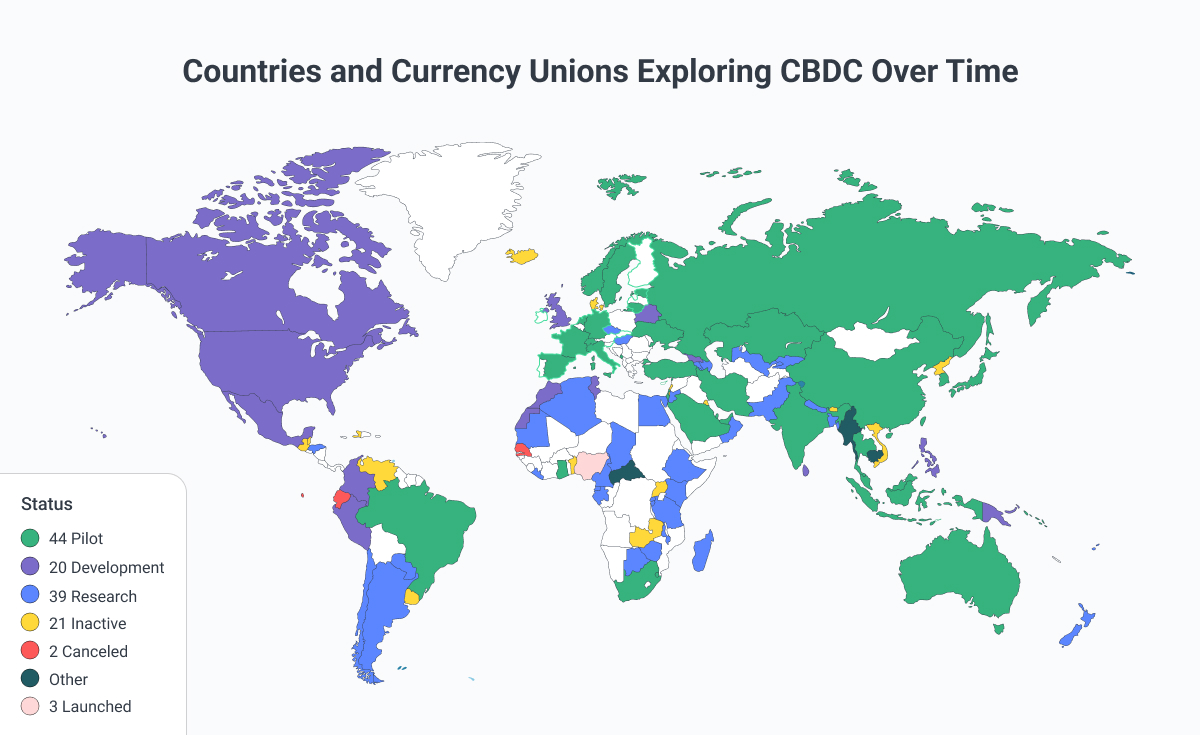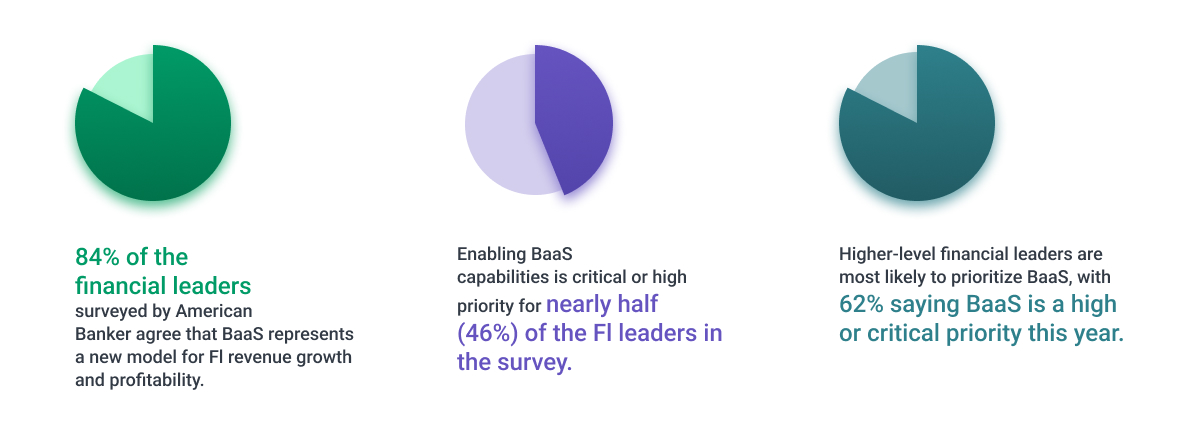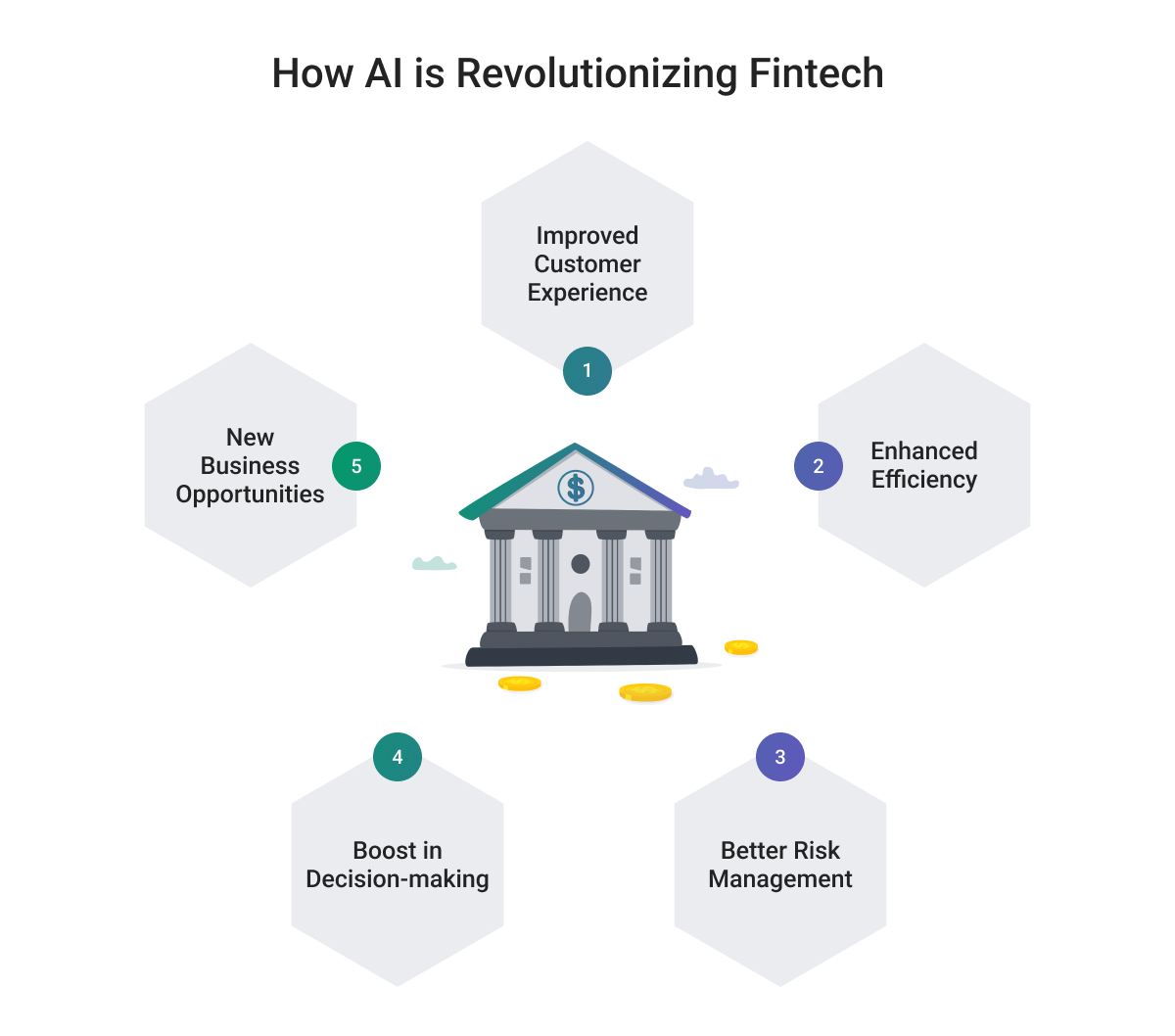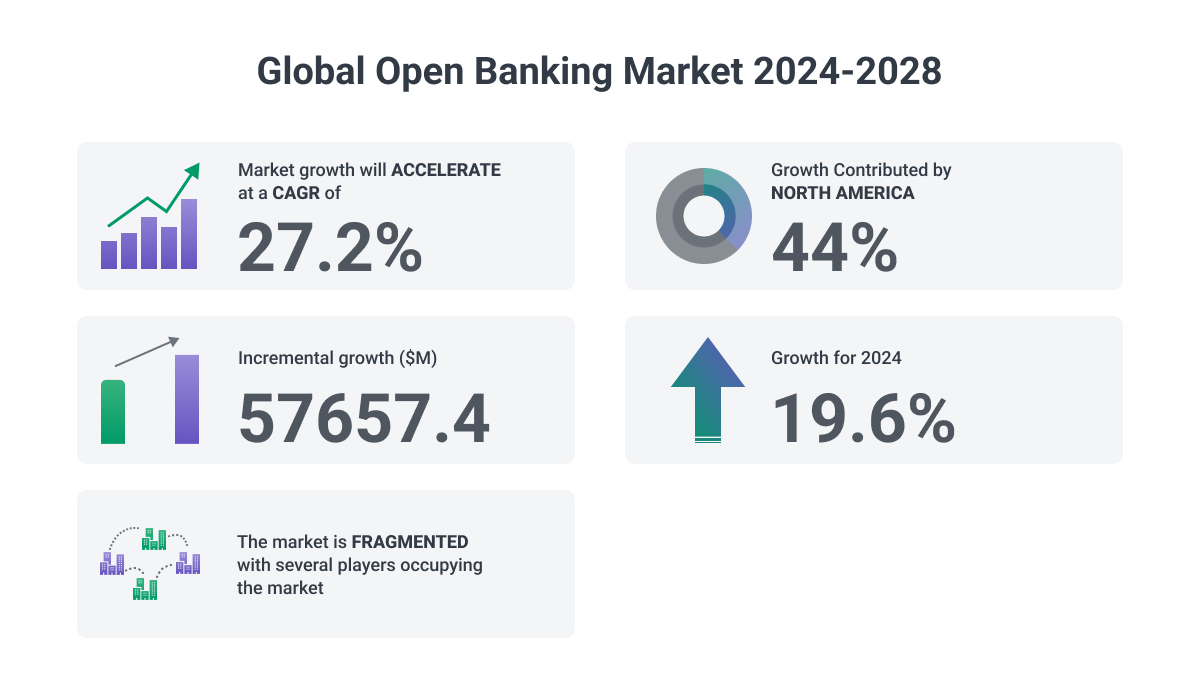The landscape of the payments industry is a dynamic mix of innovation and evolution, traversing multiple avenues at an unprecedented pace.
Witnessing a seismic shift, both enterprises and consumers have steered away from physical currency, gravitating toward digital transactions facilitated by cards, mobile devices, digital wallets, and wearable tech.
This transformative journey has redefined the essence of payments, making them completely digital and integral to bigger e-commerce, financial, and other platforms.

In this digital era, the accessibility quotient of payments has soared, aligning intricately with comprehensive user journeys. Embracing the convenience of digital wallets, the simplicity of QR codes, and the potency of mobile money, users find themselves on the brink of a fintech boom that pushed developing economies into an era of unprecedented possibilities for online purchases and contactless payments.
According to BCG's Global Payments Report 2024, global payments growth will slow significantly over the next five years, with CAGR dropping from 9% to 5% by 2028. This will take revenues from $1.8 trillion to $2.3 trillion. With 33% of the payments industry’s investor base now value-focused (up from 26% in 2021), expectations for returns have sharpened.
With years of experience developing innovative financial solutions for the industry, Softjourn stays ahead of the latest trends shaping the future of financial technology. We’ve helped fintech companies navigate the evolving landscape with custom software solutions, from payments and expense management to sustainable finance.
In this article, we explore the top fintech trends driving innovation and transforming the industry.
Top Fintech Industry Trends for 2025
The fintech industry is accelerating; according to a report by Statista, the global market is expected to grow from $103.75 billion in 2024 to $141.18 billion in 2028.
.jpg)
This growth is driven by many aspects, including the increasing adoption of online payments, the rise of embedded finance, and the growing demand for financial services from emerging markets. In these circumstances, fintech consulting has become necessary for many companies as they try to navigate new technologies and markets to stay relevant.
In the ever-evolving landscape of fintech, 2025 promises to be an important year, characterized by several transformative trends poised to redefine the industry.
1. Embedded Finance

The integration of financial services into non-financial platforms is set to surge. From e-commerce sites offering loans to social media platforms introducing payment functionalities and payment facilitators like PayPal, Stripe, and Square into everyday payment experiences.
Embedded finance, a concept gaining more traction in 2025, presents a transformative opportunity for software platforms and marketplaces. The integration of financial services into these ecosystems holds promise but faces hurdles within the realm of Software-as-a-Service (SaaS) platforms and marketplaces.
There is a big potential for embedded finance to alleviate pain points faced by small to medium-sized businesses (SMBs), particularly in managing financial services.
However, despite its potential, barriers exist in the form of compliance, security, and navigating complex regulatory landscapes. To overcome these obstacles, businesses must decide whether to buy, build, or partner. The strategic partnerships approach is one of the best due to the complexities and costs involved in developing financial software with the expertise of software companies with decades of experience.
Looking ahead, the future of embedded finance is anticipated to witness advancements fueled by generative AI and data analytics. What we will see are platforms that will increasingly offer personalized financial products and specialized services tailored to specific industries.
2. Central Bank Digital Currencies (CBDCs) Spur Interest
The exploration and potential launch of CBDCs by various nations will shape the future of digital currencies. These government-backed digital currencies aim to enhance financial inclusion, reduce transaction costs, and potentially revolutionize cross-border payments.

Since more than 90% of the money in circulation is digital, according to Harvard Business Review, CBDCs are generating more interest. The IMF recently announced that they've created a handbook as various countries were actively exploring or piloting CBDCs.
Among the countries that have already launched CBDCs or are conducting large-scale pilots, adoption remains slow and limited. To date, three jurisdictions have launched a nation-wide CBDC: The Bahamas, Jamaica, and Nigeria. Several other jurisdictions have initiated large-scale CBDC pilots, including China, the Eastern Caribbean Currency Union (ECCU), and India.
China was one of the most prominent nations advancing in this area, having conducted extensive trials of its digital yuan in several cities.
The Chinese pilot started with the distribution of 100 million digital yuans and recorded an immense number of transactions. They plan to roll out e-Yuan to reduce the country's dependency on super-apps like WeChat and Alipay, which currently hold 92% of all online transactions in China.
There are other countries that are exploring CBDCs, like Sweden, South Korea, and even the US.
International organizations like the International Monetary Fund (IMF) and the Bank for International Settlements (BIS) were actively studying and publishing reports on CBDCs. They were analyzing the potential implications of CBDCs on financial stability, cross-border payments, and the global monetary system.
Alongside governmental efforts, private sector entities, particularly in the finance and technology industries, were exploring their roles in the potential CBDC ecosystem, or they are focusing on the development of digital wallets or platforms to facilitate CBDC transactions.
3. Decentralized Finance (DeFi) Reaches Maturity

DeFi's evolution continues, offering more sophisticated and secure decentralized applications (dApps). Expect developments in lending, borrowing, and yield farming, with a focus on scalability and regulatory compliance.
In 2025, the decentralized finance (DeFi) space is gearing up for a transformative phase marked by maturation and expansion, addressing core challenges while pushing the boundaries of financial innovation. This evolution is evident in several key areas within the DeFi ecosystem.
One prominent facet of DeFi evolution is the refinement of lending and borrowing protocols. Platforms like Aave and Compound have pioneered decentralized lending, allowing users to lend and borrow assets without traditional intermediaries.
We expect that in 2025, these platforms will refine their models further, enhancing user experience and expanding the range of available assets for borrowing and lending. Decentralized exchanges (DEXs) are another vital segment undergoing significant advancements.
Platforms such as Uniswap have transformed how users swap tokens in a decentralized manner. These DEXs are anticipated to introduce innovative features, such as improved liquidity and reduced fees, driving more users away from centralized exchanges toward decentralized alternatives.
Staking and yield farming are integral components of DeFi, offering users the opportunity to earn rewards by providing liquidity or locking up assets. Protocols like Yearn Finance and Curve Finance have popularized yield farming strategies. In 2025, these platforms are poised to innovate further, offering more sophisticated strategies and potentially reducing risks associated with high-yield farming.
The emergence of decentralized insurance platforms represents another crucial development. Projects like Nexus Mutual and Cover Protocol have introduced decentralized insurance solutions, enabling users to protect themselves against smart contract failures or hacks. The year ahead might witness these platforms expanding their coverage and introducing more customizable insurance products.
Overall, 2025 presents a pivotal juncture for DeFi as various platforms and protocols aim to address existing limitations, enhance functionalities, and attract a broader user base. These developments signify a maturing landscape that is progressively integrating decentralized finance into the broader financial ecosystem.
4. Super Apps on the Rise
Super-apps are becoming more present in the lives of consumers as they can meet multiple needs from one place. They are a one-stop portal for everything and the first stop for many customer journeys.
Superapps are on the rise, with WeChat and Alipay emerging as top players in China, and Berlin-based super-app Bling recently raising $11.8 million to solidify its market position.
.jpg)
The Super Apps Market is experiencing rapid growth, driven by several key factors and opportunities. According to a recent analysis by The Brainy Insights, the global super apps market is expected to reach $918.41 billion by 2033, at a CAGR of 27.9% during the forecast period 2024 to 2033.
Super apps, a concept popularized by platforms like WeChat and Grab, have revolutionized the digital landscape by aggregating multiple services within a single platform.
These super apps offer users a seamless user experience, allowing them to perform various tasks and access a range of services without switching between multiple apps. Integration covers an array of functionalities, from communication and social networking to financial services, shopping, transportation, and more.
Examples of the biggest super apps on the market that are offering payments:
- WeChat (China): A pioneer in the super app space, WeChat combines messaging, social media, payments, e-commerce, and various lifestyle services.
- Grab (Southeast Asia): Initially a ride-hailing service, Grab expanded into food delivery, digital payments, financial services, and more.
- Alipay (China): Beyond being a payment platform, Alipay offers financial services like wealth management, insurance, and lending.
- Gojek/Tokopedia (Indonesia): Started as a ride-hailing app, Gojek diversified to provide food delivery, logistics, and even on-demand services. Gojek merged with Tokopedia to form GoTo Group, combining e-commerce with ride-hailing and financial services. This merger significantly expanded its reach, making it one of the largest tech ecosystems in Southeast Asia.
- Revolut (Europe): Global Neobank Super App based in London offering a wide range of services, including banking, currency exchange, investment, and payment solutions. With over 45 million users worldwide, Revolut continues to expand its suite of tools designed to simplify personal and business financial management.
- LINE (Japan, Taiwan, Thailand): Originally a messaging app, LINE has expanded into mobile payments, e-commerce, financial services, and even AI-driven services. LINE Pay is a convenient mobile payment service that enables seamless fund transfers and transactions.
The growth of the mentioned platforms will continue to rise in 2025 thanks to their convenience as they provide a one-stop solution for multiple needs, enhancing convenience and efficiency.
As super apps continually evolve and diversify their offerings, they penetrate deeper into users' daily routines, becoming an indispensable part of their lives. To ensure they always understand their user's needs, companies behind super apps are continually expanding their ecosystems by partnering with various service providers, driving innovation, and attracting more users.
The trend of super apps is likely to persist and grow, driven by a constant quest to enhance user experiences, expand service offerings, and cater to evolving consumer demands in an increasingly digital world. As these platforms innovate and offer more personalized and integrated services, their appeal and influence are expected to continue growing globally.
5. Will Banking-as-a-Service (BaaS) Remain Relevant?
Initially, Banking-as-a-Service (BaaS) collaborations primarily involved banks teaming up with fintech companies focused on APIs. This allowed for more efficient delivery of enhanced financial services when integrated into other platforms. However, a recent Forbes article sheds light on the results of those partnerships that didn't deliver.
-Global-Market-Report-2024.jpg)
Indeed, some banks are still fighting to remain relevant and digitalize their products. With their lack of API experience, they rely on API-focused tech companies from non-financial sectors, like e-commerce marketplaces and rideshare apps, to help them get into the race.
Without enough people on the bank side to analyze and vet the partnership and without a lot of experience in the field, it becomes significantly harder to find the right partners and ensure good deals for both sides. Another interesting insight we've come across is the nature of the partnerships as banks either purchase technology or use services a fintech company provides. So partnership might not be the right word to describe it.
As the adoption of API-first design becomes increasingly widespread among companies, fintech firms acting as distributors stand to broaden their customer base beyond traditional financial brands. And for them, there's potential for increased profitability by specializing in specific market segments.
Other fintechs will most likely focus on serving banks, and their fate might be defined by whether they will become an integral part of banking services.

6. AI-Powered Personalization in Fintech
Artificial Intelligence (AI) and Machine Learning (ML) have catalyzed a monumental shift in the landscape of fintech. The fusion of AI and ML technologies development has unlocked the potential for highly individualized financial services. Fintech companies harness these advanced algorithms to process colossal datasets, tailoring financial experiences for users.
This adaptation allows for personalized investment portfolios, banking interfaces, and finely-tuned financial advice, catering to the specific needs and preferences of each customer. It also helps with better risk management, data-driven decision-making, and enhanced efficiency.
When it comes to better customer experience, AI has become a cornerstone in augmenting customer engagement within fintech platforms. By scrutinizing user data, fintech companies can offer hyper-personalized services that range from suggesting investment options aligned with individual risk profiles to furnishing predictive financial insights.

In McKinsey's research on AI in the finance world, AI is seen as a building block of any fintech that aims to offer intelligent solutions to its tech-savvy users. AI's role in fraud detection and prevention is also indispensable in the fintech realm.
AI-based systems continuously analyze transactional data in real-time, and the impact is tangible: AI-powered fraud detection saved the fintech industry an estimated $12 billion in 2024, and is projected to save financial institutions over $400 billion annually by 2025 through improved fraud detection and prevention.
AI-based Chatbots have emerged as vital components of superior customer service in fintech applications. AI algorithms empower these chatbots to interact seamlessly with users, providing real-time assistance, tailored recommendations, and quick query resolution. The integration of
AI-driven chatbots are revolutionizing fintech, with a 150% increase in interactions as they simulate human-like conversations and enhance accessibility to information. About 69% of consumers prefer voice authentication for banking, a trend poised to grow. Fintech chatbots are becoming indispensable, transforming customer engagement, saving businesses up to 862 million hours, and driving a market projected to reach nearly $7 billion by 2030.

The trajectory of AI-powered personalization in fintech portends a promising future. As AI algorithms evolve, learn more about the user's points, and learn from different behaviors, the level of personalization that digital-first banks and other financial players are set to soar. This trajectory holds the potential to metamorphose the industry by delivering more sophisticated, tailored financial products and services in 2025.
7. Further Expansion of Open Banking
The beginnings of the open banking sector can be traced back to the European Payment Services Directive PSD2 and the UK Open Banking Initiative. Leading the charge in open banking advancements, the UK currently stands as a forerunner, while European, Baltic, and Nordic nations closely follow suit.
A number of countries, including India, Japan, Singapore, and South Korea, do not currently have formal or compulsory Open Banking regimes, but their policymakers are introducing a range of measures to promote and accelerate the take-up of data sharing frameworks in banking.
On the other hand, the US follows a market-led approach to Open Banking, with limited government initiatives or a unified federal policy due to fragmented state-based banking regulations and a preference for minimal red tape.
Major banks recognize the strategic value of Open Banking and are developing API-based solutions in partnership with third parties to remain competitive. However, without an industry-wide API strategy, screen scraping persists, allowing third-party providers (TPPs) to access customer accounts using bank credentials.
This practice is inefficient, increases liability for banks, and exposes customers to greater risks by granting TPPs access to more data than necessary.
Recent strides in regulatory measures have surfaced in regions like Australia, Canada, and Latin America, and these movements have dynamically altered banking and financial landscapes worldwide. After the arrival of PSD3 in 2023, new challenges and opportunities have opened for businesses and fintechs.
A Research and Markets report predicts that the global open banking market size will reach $135.17 billion by 2030. The market is anticipated to expand at a CAGR of 27.4% from 2024 to 2030.
With widespread smartphone penetration and enterprise tech advancements like IaaS, PaaS, and SaaS are catalysts for evolving open-banking regulations. These advancements benefit both new entrants and incumbent banks, albeit posing integration challenges for legacy systems.
The emergence of new tech-driven players in retail banking is already happening as digital-first banks can successfully leverage interconnected IT architectures to harness all the benefits of open banking.

The Future Is Here
The fintech landscape of 2025 is an intricate fusion of innovation, transformative shifts, and projections. With the pervasive acceptance of digital transactions and the evolution of embedded finance, this year marks a crucial milestone in reshaping financial experiences.
The Fintech industry's remarkable growth trajectory, forecasted to soar from $340.10 billion in 2024 to a projected $1,152 billion in 2032, hinges on several pivotal trends:
- Embedded finance emerges as a transformative force, integrating financial services into everyday platforms and reshaping SMBs' financial management. However, compliance and regulatory complexities present significant hurdles that demand strategic partnerships and innovative approaches to overcome.
- Central Bank Digital Currencies (CBDCs) stand at the forefront, positioned to revolutionize global monetary systems in many countries. As international organizations dive into the potential implications, CBDCs offer the promise of enhanced financial inclusion and reduced transaction costs on a global scale.
- The decentralized finance (DeFi) space will mature further in 2025, refining lending protocols, advancing decentralized exchanges, and expanding decentralized insurance platforms. These developments signify a maturing landscape that seeks to integrate DeFi into the broader financial ecosystem.
- Super apps will continue their ascent, becoming indispensable to users' lives by aggregating diverse services within unified platforms.
- Banking-as-a-service (BaaS) collaborations face hurdles, with banks struggling to digitize products and navigate API partnerships efficiently. Fintech firms specializing in APIs witness expanded customer bases, while others focus on becoming integral parts of banking services.
- AI-powered personalization revolutionizes customer engagement and fraud detection within fintech, offering hyper-personalized financial solutions and contributing significantly to fraud prevention and open banking, which continues its global spread, driven by technological advancements and regulatory measures.
- Widespread smartphone penetration and enterprise tech innovations catalyze open-banking evolution, benefitting new entrants while posing integration challenges for incumbent banks.
These trends collectively shape a landscape where technology and finance converge, promising greater accessibility, innovation, and disruption within the fintech sphere.
As 2025 unfolds, these transformative trends redefine interactions and user perceptions of financial services, steering the industry towards a more digitally integrated and accessible future.

Ready to Up Your Competitive Edge in 2025?
Partner with Softjourn to shape the future of fintech. With over 20 years of experience and a portfolio spanning banks, compliance solutions, payment apps, and more, we bring unparalleled expertise to your projects.
Whether you're innovating in digital banking, streamlining payments, or building secure financial solutions, our team is ready to help you succeed. Let’s create the next breakthrough in fintech—together. Contact us today!
Fintech Industry Updates
Retail FinTech VC Funding Drops in Q1 2025
Venture Capital investment in retail fintech fell nearly 38% in Q1 2025, totaling $1.9B, as concerns over tariffs, inflation, and IPO slowdowns outweighed optimism around AI and regulatory easing.
Seed-stage funding and valuations saw steep declines, while growth-stage deals remained afloat thanks to outliers like Klarna’s $12B valuation. With ongoing market uncertainty, restrained funding is expected to continue through mid-2025.
[Source: PitchBook via PYMNTS, May 2025]


















